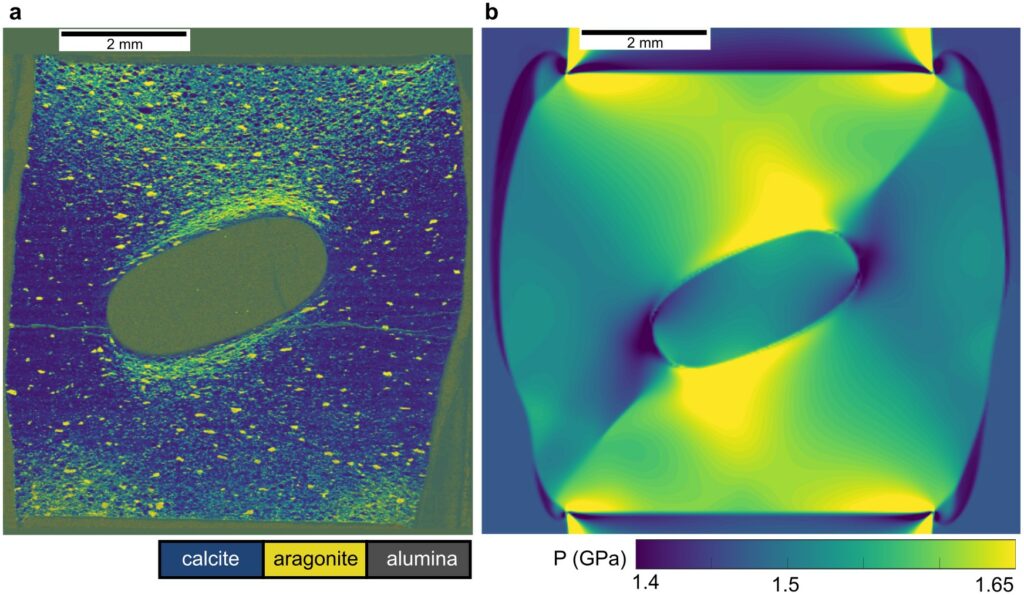This research combines numerical models and deformation experiments to quantify the effect of evolving sample geometry on the heterogeneous distribution of mechanical variables such as differential stress and mean stress.
We focus on experiments, where we can see clear evidence for phase transition or mineral reaction with large volumetric change (e.g. calcite aragonite transition as in Fig. below). We compare the phase distribution in the experiment and the variations in mechanical variables developed in the sample during the experiment. The variations in mechanical variables influence the spatial occurrence of a mineral reaction or a transformation.
Such an experimental work makes an important contribution to investigation of the effect of non-hydrostatic stress on phase transformation and thus help us to better understand observations in natural samples. Furthermore, it may lead to improvements of flow laws for heterogeneously deforming experiments.



